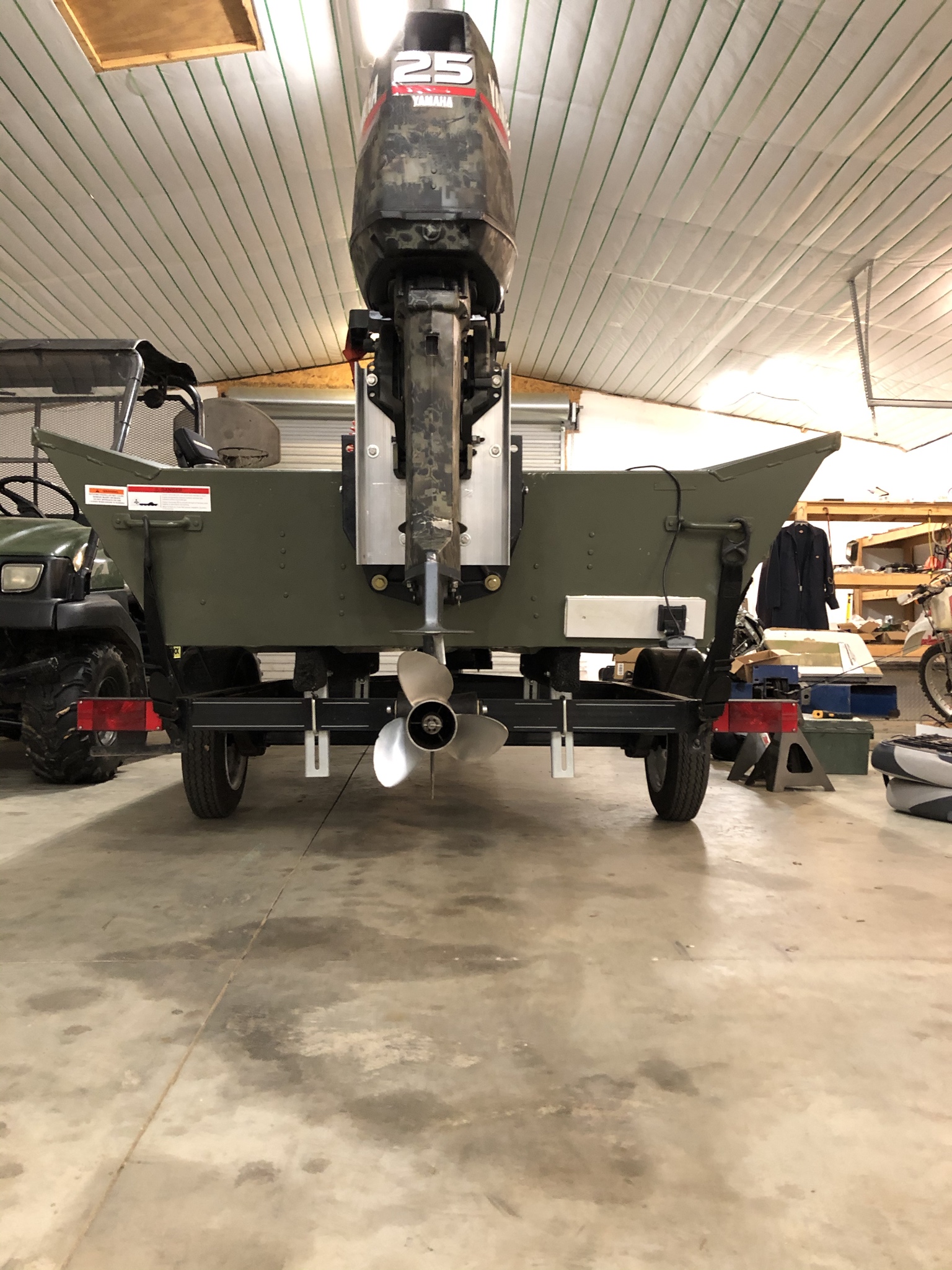wmk0002
Well-known member
I have an Alumacraft 1648 NCS flatbottom with a 15" transom that I recently mounted a 1988 Yamaha 30hp longshaft on. In the fall I installed a Panther 55 trim unit which has about 7" of setback I believe. I used 2 pieces of 3" x 4" x 0.250" 6061 angle to construct a riser/jackplate that would allow me to use a longshaft like this motor. I initially installed the motor in the top hole of the motors transom bracket which put the cav plate virtually even with the bottom of the hull. I think it reality it was still about 1/16" too low though. I lake tested it and it performed well - I was at about 6000 rpms and 30 mph with a Powertech SRA3 10 pitch. It was obvious by looking though that it needed to come up a decent bit more. I since moved it up one hole which puts it pretty spot on to 1" above the bottom now. I have one more hole on the motor I can raise it plus I can drill out and shift the angle brackets up 1-1.5"
I plan to tweak it but I had a couple of questions. Mainly just wondering if anyone had any idea what the final dialed in height may end up being so I can make mare aggressive changes initially? I also had some crazy tiller torque and really hope that as I go up that will decrease some. First run i had the trim tab/anode in the default position aligned with the skeg. I since have turned it to the right maybe 30 degrees to see how that helps. I also had a question about my prop. 10" just seems like a really low pitch for this motor no matter the hull so I bought a used SRA3 in a 13 pitch to also try. Comparing the props, the 10 pitch is in a lot better shape but it also has a ton more cup despite being the same model. When using a prop calculator how should I factor in the cup to the pitch input? When I put in 6k rpms, 10" pitch, 1.85:1 gearing, and 30 mph it says I have 2% slip which is obviously inaccurate. Should I bump the pitch up to an 11 or even a 12? All of that aside, if I have a worked prop does that mean that specific prop can be run even higher than a factory SRA3 like the 13 I bought? Right now I just want to get the motor height semi dialed in before I play with props too much and try to dial in my rpms.

I plan to tweak it but I had a couple of questions. Mainly just wondering if anyone had any idea what the final dialed in height may end up being so I can make mare aggressive changes initially? I also had some crazy tiller torque and really hope that as I go up that will decrease some. First run i had the trim tab/anode in the default position aligned with the skeg. I since have turned it to the right maybe 30 degrees to see how that helps. I also had a question about my prop. 10" just seems like a really low pitch for this motor no matter the hull so I bought a used SRA3 in a 13 pitch to also try. Comparing the props, the 10 pitch is in a lot better shape but it also has a ton more cup despite being the same model. When using a prop calculator how should I factor in the cup to the pitch input? When I put in 6k rpms, 10" pitch, 1.85:1 gearing, and 30 mph it says I have 2% slip which is obviously inaccurate. Should I bump the pitch up to an 11 or even a 12? All of that aside, if I have a worked prop does that mean that specific prop can be run even higher than a factory SRA3 like the 13 I bought? Right now I just want to get the motor height semi dialed in before I play with props too much and try to dial in my rpms.



